XVIth Canoe Sailing World Championship
Weymouth
The Canoe Sailing World Championship 2005 was held from 5 - 11 August 2005 at the Weymouth and Portland Sailing Academy, the site for sailing events at the 2012 Olympic Games. A total of 57 entries were received, but regrettably the new AC variant did not achieve the necessary number of countries entering to be awarded World Championship status. After 2 days of scrutineering, which resulted in various sailors having to find lead to bring their boats to the minimum weight, and final preparations in the boat park - the main incident being a collision between a Canoe and a (non-sailor's) VW Polo, with the boat coming out of it unmarked and the car with a large dent in the bonnet and front wing - try explaining that to the insurance company!
International Canoe.
The practice race was held in almost non-existent wind in Portland harbour with Simon Allen leading all the way, followed by Colin Newman who was subsequently disqualified for a false start. Home favourite and double silver medal winner Mark Goodchild was well down the pack, keeping his powder dry. Following lunch the fleet sailed to Weymouth Bay in search wind. The very light wind eventually settled to allow the race to start in late afternoon. Massive gains were had from going inshore and Phil Robin led at the windward mark pursued by Manuel Radek of Germany and Alan Powell. Phil was eventually overhauled by Ola Barthelson of Sweden, but both were overtaken by the following pack who tacked inshore at the leeward mark, with Mark showing the sign of things to come by taking the gun, followed by Hayden Virtue of Australia and John Ellis, with Ola finishing 4th.
Day 2 arrived with clear blue sky and a light northerly wing, but after a postponement the sea breeze produced a light south-westerly breeze that enabled the race to start in Portland Harbour. Mark led from start to finish, once again hotly pursued by Hayden and John, the same finishing order as race 1.
Race 3 was sailed back to back, but the breeze had increased to 11 knots. Mark once again showed his liking for the conditions to record his third victory in a row. Hayden slipped down the leading pack to finish 7th, being overtaken by John to take second, Oliver Moore of USA was third and Simon Allen fourth.
Day 3 looked like a repeat of the day before with the start again postponed to allow the sea breeze to kick in. Hayden showed that his challenge for the world title was still alive by recording a win, with Simon starting to show his form to finish 2nd and Mark slipping to third. Race 5 was sailed back to back with the wind building slightly to allow even the heavier sailors to hike from the end of their sliding seats at least during parts of the race. Simon led at the first mark but was overhauled by Mark, who had rounded the first mark third, and John Ellis. Both boats had a close tussle throughout the race but by the finish, Mark had built up a commanding lead and was starting to look like the favourite to take the Worlds title at the halfway stage. Simon finished third, with Colin Newman showing good speed to finish fourth. The challenge from the Australians started to wane as Hayden was over the line at the start and had to return for a late start and subsequently retired when it was clear he was not going to get back through the fleet. However, with 4 races left and one discard allowed, Mark still had to keep a clean nose to take the title.
Day 4 dawned with the continuing high pressure weather system resulting in another day of brilliant blue skies and a gentle gradient northerly breeze competing with the sea breeze, making life difficult for the race officer. The IC fleet sailed to Weymouth Bay in search of steadier winds and Race 6 eventually got away in a very light northerly breeze. Ola led at the first mark followed by Hayden. By the leeward mark, Phil had moved up the fleet to third and these positions were maintained to the finish in an ever decreasing breeze that finally swung through 180 degrees about 100m from the finish, as the sea breeze established dominance. After a wait of nearly 2 hours as the wind oscillated between gradient and sea breeze, race 7 was started, but was abandoned after one lap as the fleet became becalmed. However the wind thankfully maintained sufficient strength for the sailors to hike off the end of their sliding seats for the long sail back to Portland.
On the fifth and final day 3 races were scheduled to catch up with the programme, and fortunately the sea breeze established itself early and gradually built during the day. Race 7 started in a gentle wind with Colin Newman reaching the windward mark first followed by Frido Beers of Germany. As the race progressed, Simon and Mark sailed to the front of the fleet to finish in that order followed by Colin in third and Ola in fourth. Only a disaster could now prevent Mark from winning his first World Championship with 2 races to go, but in Race 8 he demonstrated his intent by establishing an early lead that he kept to the finish after a close tussle with John Ellis, who showed blistering boat speed in the increasing wind, with Oliver Moore taking third and fellow American Karl Wittnebel in fourth.
By the start of the last race, the sea breeze had built to a steady 15 knots, allowing even the heavier Canoe sailors to hike from the end of their sliding seats for the first time during the championship. Oliver led at the first mark from Phil and Hayden. Oliver and Phil swapped positions on the reaches and back again up the next beat, with Oliver sailing into an unassailable lead following a capsize by Phil during a tack. They maintained these positions to the finish with John climbing through the fleet to take third and second overall in the Championship. With the championship already secure and no doubt somewhat relaxed, Mark sailed to 8th place, his worst position of the week.
The championship was characterised by light winds and bright blue skies, with a stronger wind only kicking in for the last race. After American domination at the previous World Championship held in 2002 in Rhode Island, USA, the UK team gained sweet revenge by taking Gold, Silver and Bronze medals. Mark was the convincing winner, followed by John Ellis and Simon Allen (who won the Bronze medal on a tie-break from Oliver Moore). The medals were presented by Albert Woods, Vice Chairman of the International Canoe Federation.
A Series-within-a series for the older "Classic" canoes resulted in a win for Manuel Radek, followed by Peter Ullmann and Frido Beers, all from Germany.
Asymmetric Canoe
The practice race was, like that for the ICs, sailed in a very light wind with former three times IC World Champion Robin Wood taking an early lead but retiring after the end of the first lap. Perhaps he realised the wind was dying away or perhaps he feared the traditional bad luck which is said to follow the winner of a practice race. Alisdair James stuck it out to win as the wind died.
The first race was also a light wind affair, causing the Race Officer to shorten course after the second lap which caught out Anders Petersson (USA) and Rob Michael, handing victory to Ben Evans with Rob recovering to second and Paul Patrick in third.
Day 2 saw the ACs sail out into Weymouth Bay where a sea breeze built to a good force 3-4: this resulted in an over-eager start by the competitive fleet and a general recall. Another false start resulted in Robin being disqualified at the restart allowing arch-rival Anders to win from Alisdair James and Peter Barr. 2 more races were held back-to-back, with Anders being masterful in the conditions and posting 2 more victories, with Robin taking 2 second places and Paul finding his feet with 2 third places.
Day 3 had the ACs out in Weymouth Bay again in very similar conditions for races 5 and 6. Robin set about the job in hand, scoring his first bullet with Alisdair second and Anders third. Anders hit back to take race 6 with Robin second and Colin Brown third.
Day 4 and the ACs were back in Portland Harbour as the ICs went out to Weymouth Bay. Alisdair won race 7 in light conditions from Robin and Anders. Robin won race 8 to keep the pressure on Anders who could only finish third behind Alisdair.
The final day saw the best sailing conditions of the week as the ACs raced at high speed in Weymouth Bay. Anders took race 9 with Robin close behind and Paul nailing another third place. The championship would go down to the wire -Robin had to win the last race and Anders finish worse than second if Robin were to win the title. Robin duly achieved his objective of the win and was followed home by Steve Bowen, Rob Michael and Tobias Kunz of Germany, leaving Anders with a fifth and to trail Robin by 1 point in the overall series results.
US report: Anders Peterson, AC USA 233
My preparations for the worlds started in earnest when my new AC arrived in April of 2004. Most of the first year was spent on learning all spinnaker maneuvers and experimenting with the spinnaker hardware on the boat to try to get it to work as well as possible. When I first got the AC, I was told to keep the kite sheet cleated during sets and douses. That worked really well in light air. But it turned out to be less brilliant once the breeze came on and the chop started building. As the wind builds, the foot of the kite gets more and more likely to brush the water before it gets all the way up or down. And having the sheet cleated makes it even easier for the sail to turn into a braking parachute as it gets into the water. One day, I noticed that the I-14 skiffs don't even have a cleat for the spin sheet. I pointed this out to them and they laughed hard when I told them what I was doing. (It's ok; these guys laugh a lot.) Once I stopped cleating the sheet during sets and douses, those maneuvers started going much smoother, and I felt I could push the spinnaker envelope into uncharted, higher wind territories.
Setting the kite in Force 5 conditions started to seem possible. But once the kite was up, I discovered that it was really hard to sail the canoe twice as fast as the waves on a broad reach. When the wave length is right (or wrong, depending on how much you like swimming), the bow launches off of one wave just to dive straight into the next on its way back down. Regardless of how far back I moved the seat, I couldn't seem to get the bow to rise enough to smoothly go over the waves. When the bow get stuffed, I was used to recovering an IC by heading up to get the bow out of the wave. But this doesn't work so well when the spinnaker is set, since the force in the spinnaker builds up when the boat slows down, and you easily get pulled over. To unload the spinnaker, I started trying to bear away instead, but this manouver often ended in a capsize due to rudder cavitation. The other really interesting challenge was to stay attached to the seat as the boat suddenly went from 16 knots to a virtual stand still.
Because of the current low interest among the west coast IC fleet, I did a lot of my weekend training sessions either by myself or with I-14's. However, Del Olsen or Matt Noble sailed IC's with me a few times during the spring of 2005. It would seem reasonable that the AC should have about the same speed potential as an IC upwind, but I could never get my boat to go quite as well as them. This was even before I put lead in my boat, so it was 3.5 kg lighter than an IC (9 kg light for an AC). I started wondering if the extra weight in the bow from the bowsprit and chute, the extra shrouds, spreaders and halyard could explain my lack of speed. I felt even slower after I went down to Santa Barbara and sailed with the I-14s over the Memorial day weekend. I used to beat these guys going upwind with my old IC, and now I was having problems hanging with the back end of the fleet. Could it really be that the T-foil on the I-14s was now working so much better than two years ago?
After evaluating my options, I decided to focus my energy on designing a new main sail. The current sail was inspired by the top heavy plan forms of I-14s: narrow at the bottom and wide in the top. That sail looked truly beautiful; very smooth and almost never any wrinkles. You would think such a sail had to be fast, but it wasn't! So in the beginning of June 2005, I went back into the sail loft and looked at my old templates from 2002. I also looked a lot at modern windsurfing, catamaran, and Americas Cup yacht sails. My conclusion was that it must be hip to be square. So I modified the top of my 2002 design to go straight out from the mast and smoothed out the shape of the leech to accommodate the square top.
The boat was going to England via Rhode Island, to ride across the ocean in the same container as the east coast boats. I therefore only got to sail with the new main sail twice before the boat was shipped to the east coast. At least there wasn't anything obviously wrong with it. Two weeks later (the night before I left for RI), Erich Chase delivered a new deeper rudder which I hoped would improve my steering ability in waves. Two untested last minute changes to my equipment -- how was this going to work out?
It was fun being at Steve Clark's place in Rhode Island! Suddenly, there were lots of canoes to sail with, and lots of new younger faces. Steve's two sons, Willy and Dave, were sailing ICs as were three of Hanna Moore's sons, Oliver, Sam, and Chris. Karl Wittnebel was sailing Bill Beaver's boat, and John Kells and George Saunders also came to play, even though they were not going to England. Steve was sailing his new spinnaker boat 'Blue Meanie', which had a tall cat rig and an over-rotating mast. As usual, Kim Clark spoiled everyone by providing all meals and snacks during the three day event.
The tuning on upper Narraganset bay was very well organized. Steve's helper Bill ran the races the first day, and Steve's neighbor Duncan (who happens to run Contender sailcloth) came to help the second day. The breeze, which had been on the light side the first two days, touched 15 knots the third day and provided great sailing around some navigational buoys. After many laps on these courses, I started feeling ready for battle. It was clear that the fastest ICs (Oliver, Karl, and John) sometimes sailed away from me on the beat, but my boat felt much faster now than it did one month earlier in Santa Barbara. The new rudder turned out to work very well downwind, and I believe it also improved my upwind performance. After three days of sailing, we packed the boats into the container, and sent them away to England.
After four weeks without a boat, it was time to head to England. Karl and I met at the airport in London and took the train down to Weymouth. Our jet-lagged brains thought it was funny how many 'mouths' we had to pass before we got there. We passed Portsmouth, Upmouth, Downmouth, Heremouth and Theremouth, before we arrived in Weymouth, which we quickly renamed to Finallyheremouth. Steve and Hanna arrived a day earlier with the youth movement (Willy, Dave, Sam, Chris and Oliver). They had already been out sailing. The Swedish and Australian contingencies were also there, as well as several of the British sailors. The sun was shining and there was plenty of breeze. It looked very promising!
Karl and I shared a room at the Boscawen house with three Swedes: Ola, Max and Kalle (Swedish nickname for Karl). The Clarks and the Moores were in the same house, as were the Australians and the Germans. It didn't take very long before we all started feeling like one big happy canoe sailing family. The days before the regatta now seem like a blur. Every morning started with a cup of instant coffee. A quick look out the window confirmed that the sky was mostly blue and the sun was shining with good breeze on the water. After a steady breakfast, we headed down to the boats. I usually started my day by moving the daggerboard cassette a little further back in the trunk. Hanna showed up around noon with a car full of sandwich material so we could all have a bite before we went sailing. After 2-3 intense hours tuning on the water, we came back to shore and put the boats back under their covers, and returned to the house for dinner and sometimes a high quality movie like 'Austin Powers, part III', or 'Awesome Aussie Skiffs'. After 3-4 days like this many of us started wondering how long this weather would last. Great winds the week before a regatta usually means...
It was good to sail the boat in breezy conditions after a four week break. It blew 17-18 kts a couple of the days, and one day it was probably touching 20 kts in the outer parts of the harbor. It was funny to note how consistent the max speed readings were on my GPS, 16.9 kts two days and 17.2 kts the windiest day. That is the fastest I ever sailed my AC! It is interesting to speculate what is stopping the boat from going faster than that. It seems 34 square meters of sail area should be enough to push the boat a little faster. The only obvious change as it gets even windier seems to be that the boat sails 17 kts at a deeper angle, and that it gets harder and harder to avoid planting the bow in the next wave. Perhaps the max speed simply follows the rule of max sail area divided by two -- just kidding.
One evening, Karl and I worked on our boats a little longer than everyone else, and we had to get dinner by ourselves. At this point we had been smitten by the scooter craze, and were traveling by scooters everywhere. So we took the scooters up to one of the local pubs in Portland. These gadgets are great because they are almost as efficient as a bicycle, and also fold up into a little package that is easy to carry when you don't use them. So we brought our scooters into the pub. While waiting for our food, a bigger table opened up so we moved over to get some more space. Some locals took over our old table and we turned around and asked them if our scooters were in their way. They looked very puzzled for a moment. I got the impression that they 1) had no idea what a scooter was, and/or 2) thought we were from a different planet. Either way, it was clear that they had never seen a scooter in that pub, and no one had ever asked them that question. Their reply was: 'You are not from around here, are you?'
The racing started on Sunday August 7 with a practice race before lunch and the first championship race in the afternoon. The wind was still blowing good in the morning, but it quickly disappeared as the sea breeze started building from the opposite direction. The practice race was sailed in an unstable northerly breeze inside the harbor. I started dead last together with Steve. Not because I intended on doing so, but rather because I hadn't heard the signals as I had to take a leak just before the sequence started. But it seemed that I could pass boats both on the beat and the run, so I quit after the first lap and sailed back in. On the first beat of the practice race it had paid off very well to go right, so I did the same thing in race #1. I had good company out there in cornerville, with Robin Wood and a couple of other hopefuls who were waiting for the big header to tack on. But this time, the wind kept lifting, so we all found ourselves on the outside of a persistent shift. I was probably around 15th at the first mark, and Robin was even further back. I tried the middle of the coarse on the run and I may have picked a boat or two, but it was starting to look pretty grim. On the second beat, I decided to go left since there seemed to be better pressure there. That worked out and I was one of the few boats that had wind all the way back up, while most boats on the right side were more or less parked in a very shiny spot. I caught everyone except Rob Michael, who maintained his lead. Going down the run, there were three of us in the lead pack, but the wind picked up from behind and number four and five caught up. I gained the lead just before the leeward mark after a close gybing duel with Ben Evans in GBR 252. Things were starting to look good for me. I thought it would be a challenge to defend my lead for another lap in the light and shifty conditions but it never hurts to be in the front! Next time we met, Rob was in second place just a couple of lengths behind, with Ben in third. There were several sound signals from the committee boat as I was approaching the mark but I couldn't get a good view of their flags since they were almost dead downwind of me and flags have that built in property that they fly in the direction of the wind. Of coarse it didn't help to have a 23 square meter kite in between me and the flags either. Since the sounds repeated as I rounded the mark, I assumed that the coarse was changed; Rob also doused his kite. I started sailing upwind and there were even more sound signals. Then I saw that Ben kept his kite up and continued to the finish line. Damn! Rob got his kite up again and only lost one place. I lost four boats and ended up in fifth place! Very frustrating! Anyway, I filed for redress when I came in. Oliver Moore filed a protest about the shortening of the IC course as well. This stirred up a lot of activity among the officials who didn't seem prepared for any such actions. They didn't even have a protest committee ready to hear our protests, so the hearings were postponed for the following afternoon.
The next day, we traded courses with the IC fleet and sailed out on the beautiful Weymouth bay while the ICs stayed inside Portland harbor. The wind was light and shifty on the way out, but it picked up to a steady 10-12 kts in time for the first race. My battle with Robin started on the first beat where he covered me going out on the left side of the coarse, preventing me from executing my initial plan of going right. Since the right side paid off with a nice shift, I got to the windward mark in about sixth place while Robin was around third. Both Robin and I advanced through the fleet on the way downwind. By the next weather mark, Robin was in the lead, Alisdair James in second place, and I was third. I passed Alisdair going downwind, but it seemed very hard to catch Robin. Since he was ahead and to leeward of me I could only see him by sailing very flat and looking under my kite. I started telling myself that it wasn't so bad to be in second place after all, considering my poor first beat. The next time I looked under my kite I couldn't see Robin. The coarse was shortened again and I got the gun with Alisdair in second place. Robin finished around fifth place. He apparently had some weeds on his foils, but in the end that didn't matter because he had been OCS.
Next race, I got everything right from the start, went to the right side of the coarse early on and rounded the first mark in the lead well ahead of Robin who was in second place. I had good boat speed, especially upwind where I seemed to point a little better than most others. I kept my lead around the coarse without too much trouble.
In the third race of the day (race #4), I sailed well on the first beat, but Robin sailed even better, so he was first around the weather mark. I was in second and followed Robin pretty closely all the way around the coarse. I finally managed to get past him on the last run by sailing a slightly lower angle than him without loosing speed. Three bullets in one day! I could hardly believe it. Back on shore some people gathered around my boat to try and figure out why it seemed to go so fast.
The organizers had now managed to scramble together a protest committee and the hearing of the two protests from Sunday was scheduled for 5 PM, but Oliver Moore's was going to be heard first. That took an hour, after which the chairman had to leave so my hearing was postponed to Tuesday at 5 PM!
Two races were scheduled for the following day and we were going back out on Weymouth bay. The conditions were very similar to Monday, with 10-12 kts from the west. First race was almost a carbon copy of race #4, with Robin in the lead around the last weather mark, me in second place followed pretty closely by Alisdair. Now it was my turn to make a mistake on the final downwind leg. Halfway down, we were all sailing on port, with Robin in the lead and myself in second place. I crossed in front of Alisdair and gybed to leeward of him. But something happened with the wind on the last stretch to the leeward mark, and after we gybed back to port Alisdair was just in front of me. Damn! Robin won, Alisdair second and I was third.
In the second race of the day (#6), I did much better and nailed the first beat. I rounded ahead and kept the lead all the way around the coarse. Robin was second. Back on shore the circle around my boat seemed to be growing. The flap on my dagger board had been nominated as the primary reason why my boat was fast. No one seemed to notice my new main sail or check where the dagger board was in the trunk.
My protest from two days ago was now going to be heard, and despite some memory diffusion I managed to convince the protest committee that all those sound signals were misleading and that I should get redress. They awarded me two points for the first race.
Wednesday morning, I was informed that the race officer was appealing the decision of the protest committee and that the matter was now in the hands of the ICF jury. Not much I could do about that so I tried focusing on the racing instead. We were going to sail inside Portland harbor this day, while the ICs ventured out on Weymouth bay. This was one of the few cloudy days with light and shifty wind conditions throughout the day. The wind was blowing from NW, i.e., the Weymouth side of the harbor. On the first beat of race #7 the wind shifted about 25 degrees to the right. This was not very good for me, since I was on the left side of the course. I tried crossing over to the right side, but there were many boats ahead of me and not very much wind to sail in behind everyone else. Alisdair in GBR 272 lead at the weather mark and I think Steve Clark was second with Robin not far behind. I think I rounded in 20th place. Things were looking grim but I took a gamble and gybed directly around the mark before setting the kite. Most other boats had continued down the coarse on starboard so at least I had my pick of lanes. Better than that, the breeze increased and continued going north so I planed down to the leeward mark before most others even got the new breeze. I think I rounded the leeward mark in 4th place and managed to sneak past Peter McLaren in GBR 280 on the following beat. Alisdair and Robin were too far ahead and I never caught up with them. The only thing I remember from race #8 was that it was less traumatic than race #7. Robin won with Alisdair in second place and myself in third place again.
Thursday was the last day of racing and the sun was shining again. The forecast talked about a westerly force 3 backing to a southerly force 4-5 in the afternoon. We were going to sail out on Weymouth bay again and the conditions looked very promising. Race #9 started well for both me and Robin. I was initially ahead of him, but he snuck past me after a bad tack on the first beat. Robin rounded the weather mark in the lead and I was second. We stayed close on the downwind leg and we rounded the leeward mark almost simultaneously. Robin was faster than me on the second beat and pulled away. Then he sailed really well on the way back down wind and by the second time we go to the leeward mark his lead was around 15 lengths. The right side of the coarse had been paying off well throughout the week but with southerly winds in the forecast, I thought it would be worth trying to go left. To my surprise, Robin continued straight out to the right side without covering me. I sailed almost all the way to the left lay line and by the time we met Robin's lead was down to about four lengths. He tacked on top of me and I tacked back to starboard. The next time we met Robin was less than a length ahead and I rounded the weather mark right behind him. Robin gybed to port before setting the kite while I continued a little on starboard before gybing. We both reached across the course on port until we were getting close to the lay line. Robin was still ahead of me, but instead of crossing behind him, I gybed to weather of him. I must have gotten a gust that he didn't, or picked up more waves than he did, because I managed to sail a little lower than him without losing speed. When we got to the final leeward mark I was ahead of him and got the gun.
Assuming that my redress would stand, I had now won the regatta. I remember that Robin came up to me in between the races to congratulate me. The breeze freshened a little between the races and the conditions were looking ideal. Since I had shipped my boat 7000 miles to sail this regatta, I decided to do the last race as well. Lurking in the back of my head was also a bad feeling about that appeal .
The first half of the first beat of race #10 went pretty well. Steve Bowen, Rob Michael and Tobias Kuntz had good speed on the right side of the course and halfway up the beat I was in third or fourth place, just ahead of Robin. Then I capsized in a tack! I am not sure exactly what happened but my technique had probably gotten sloppy after sailing in lightish winds all week. It didn't take very long to get the boat back up, but I lost many valuable boat lengths to the leaders. I believe Rob rounded the weather mark first with Steve in second place and Tobias in third. Robin was around fourth, while I was around tenth. I might have picked up a boat or two on the way downwind but I was still pretty far behind the leaders at the leeward mark. Someone had capsized a couple of lengths after rounding the leeward mark and was blocking my lane. I decided to tack, and... capsized again! I couldn't believe it. Well, at least I got the boat upright pretty quickly. Needless to say, I was now pretty far behind the leaders. But I got good speed on the left side of the course going back upwind and started catching people. Several boats started having problems in the increasing breeze and chop, and were kind enough to let me pass while they were trying to catch shrimp with their kites. After the final lap I ended up finishing in fifth place, right behind Rob and Tobias. Robin won the last race with Steve in second place.
Once we got back ashore, I confirmed that Robin and I both had 13 points after two discards, but I would win the tiebreaker because I had more first place finishes. But the appeal of my redress was still not decided, so the outcome was uncertain. Later in the afternoon, Ben Fuller informed me that the jury couldn't reach a decision based on the facts they had. The jury would instruct the protest committee to reopen the case and have another hearing Friday morning.
In the IC fleet, Oliver Moore finished off the regatta by winning the final race by over a minute. That put him on an equal number of points with Simon Allen, but Simon won that tiebreaker and ended up taking third place overall. Mark Goodchild won with John Ellis in second place. Phil Robin finished fifth. Interestingly enough, both John and Phil were sailing ACs in IC mode, that is, without bowsprit and other spinnaker equipment.
Friday morning offered more nice breeze and sunshine. I went back to the protest room to answer more detailed questions regarding the finish of the first race from 5 days earlier. After the committee had queried both me and the race officer for an hour they deliberated for a while and came back with the decision that the redress would stand! Good news for me, bad news for Robin. But it turned out the issue still wasn't settled because the jury had not made their final decision. In the mean time team USA, with Oliver, Willy Clark and Karl Wittnebel, challenged the Brits over the New York cup. It was blowing up to 15 knots but that didn't stop the British team of Mark, Simon and Phil from defeating them 2-0. While waiting for the jury decision, I rigged the small kite and let Max, Ola, Chris, and Oliver take turns and sail my boat. They did great and Kalle was taking pictures of their adventures from a rib. It was fortunate that they took the opportunity to try my boat that day because it turned out to be the last day I owned it.
Later in the afternoon the jury called me and the race officer to deliver their verdict. They overturned the decision of the protest committee. No redress awarded. I had to replace the two points from the redress in the first race by my fifth place finish and had to count three points from a third place finish instead of the two points from the redress. This meant that I got 14 points overall and that Robin would win the regatta.
To summarize my impressions from the week, I think most of us had a very good time. The weather was great and we sailed all races according to schedule. I had not sailed against other AC's before this week so my good speed was pretty surprising. Many of the races were very close and were not decided until the last half of the last leg. For me it was good to have downwind finishes because I think I was second or third around the final weather mark in all but two of the five races I won. I believe seven out of the ten races were shortened and I don't understand why a race can't be longer than 45 minutes. I recall from previous world championships that races were generally over an hour long. I believe the racing would be more fair if the course was shortened only when absolutely necessary, for example when the wind is dying.
It is, of course, very frustrating to know that I would have won the regatta if I had only seen the shortened course flag in the first race. But all in all, I had a great battle with Robin and I wish I had the opportunity to sail against him more often. The jury work was dubious, and the fact that their final decision was delayed until the day after all racing was completed is simply unacceptable. I think it is time to straighten out the procedures and ask the ICF sailing committee to step aside for a qualified jury of international sailing judges to interpret the rules in a fair and equitable manner.
Ulrike_veerkamp.jpg)
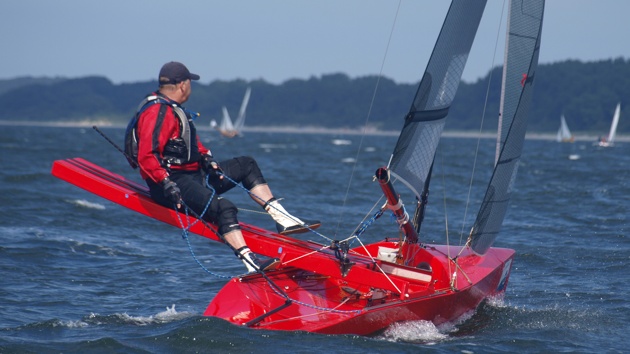
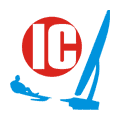

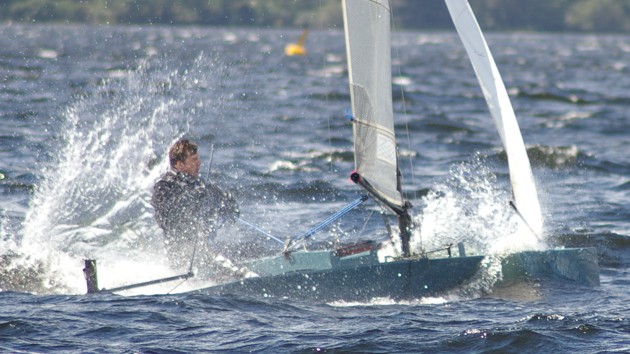
Ulrike_veerkamp.jpg)
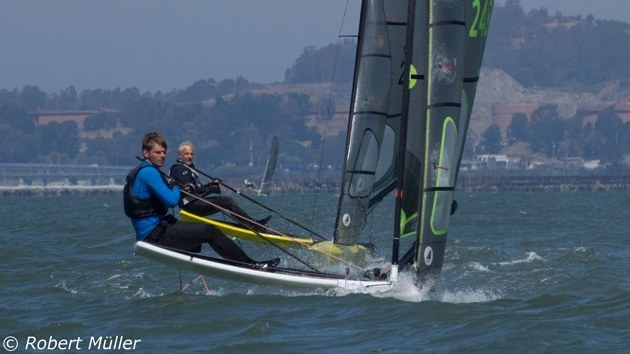

Ulrike_veerkamp.jpg)
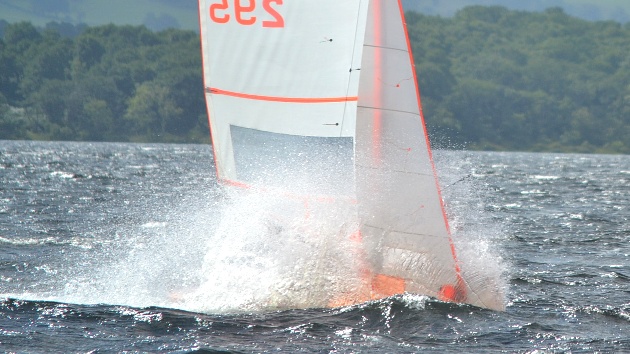
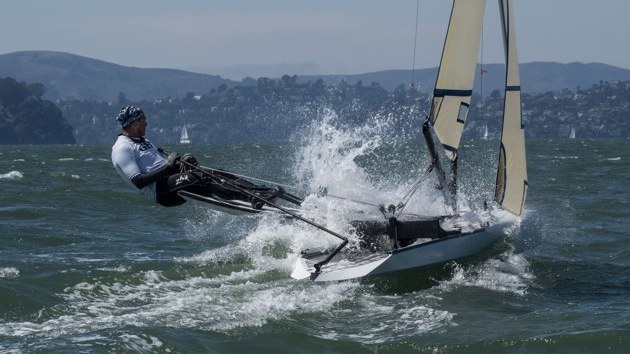

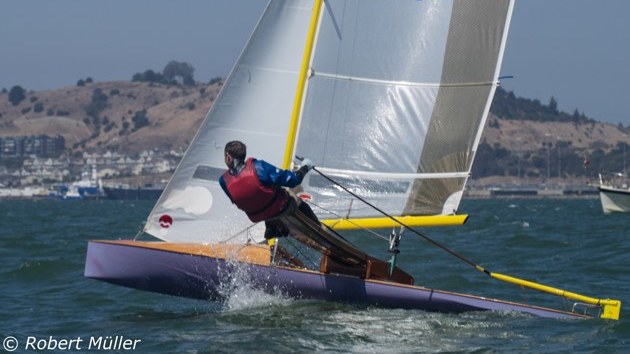
Ulrike_veerkamp.jpg)
Ulrike_veerkamp.jpg)